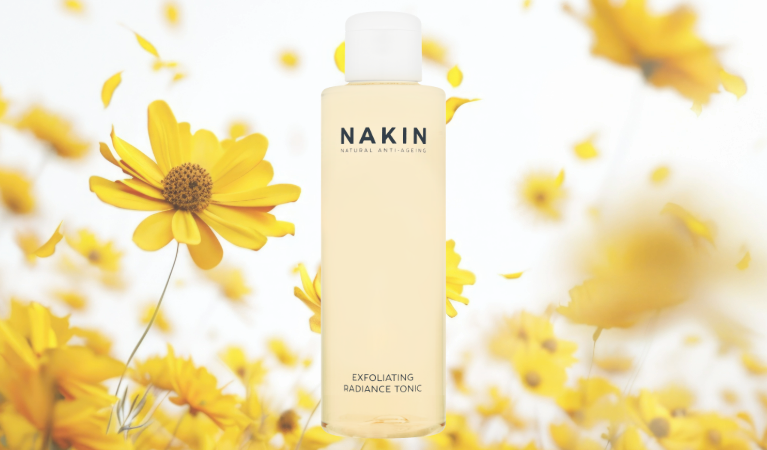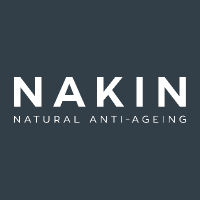Is an Exfoliator a Cleanser?

With so many different types of facial cleansers around these days, it is no surprise that we can be a little confused about what they all do. One of the queries that we receive is if our Exfoliating Radiance Tonic is a cleanser. It is a type of facial cleanser but has different properties and benefits to the usual cleansers in our routine. At Nakin we have a full collection of face cleansers and they can be divided into first step cleansers, second step, and then our exfoliator.
Our Exfoliating Radiance Tonic is a type of cleanser but is very much an exfoliator. Although it does have some cleansing properties, it would not be used as a first step cleanser. The Advanced Cleansing Milk or Rejuvenating Face Wash would be better for this. They will remove daily grime, make-up, and SPF. Then the exfoliator would be used at night or as required. It is more of a treatment to remove dead skin cells, deep-down dirt and clear pores, plus has renewal properties with the plant AHAs. It has a modern liquid formula, which is much better for exfoliation as it does not cause the damage and micro tears that abrasive exfoliators can.
If you use a toner like our Purifying Face Toner then this is a second step cleanse to clear away any remaining grime, hydrate and freshen the complexion. The cleansing milk, face wash and toner can all be used in the morning and evening, but the Exfoliating Radiance Tonic is suggested for evening use and you would not need to use the toner beforehand.
A face exfoliator and a cleanser serve different purposes within a skincare routine, though both are integral to maintaining clear and healthy skin. A cleanser is designed to remove dirt, oil, and makeup from the skin's surface, effectively purifying the skin on a daily basis. On the other hand, a face exfoliator is used to remove dead skin cells and promote cell turnover, providing a deeper clean that enhances skin texture and radiance. While a normal cleanser can be used twice daily, exfoliation is typically recommended two to seven times a week, depending on how kind that it is to skin as we need to prevent irritation or over-exfoliation. Therefore, while both contribute to skin health, a face exfoliator is not the same as a cleanser.
Exfoliation is a key step in any skincare routine, as it helps to remove the build-up of dead skin cells that can lead to clogged pores and dull-looking skin. There are two types of exfoliants: physical and chemical. Physical exfoliants use granules or beads to physically scrub away dead skin cells, while chemical exfoliants use acids or enzymes to dissolve them. Both methods can effectively remove dead skin cells, but we recommend a natural chemical exfoliator as they should be kinder to skin. They work for all skin types including oily or acne-prone skin, and sensitive or dry skin. It's important to patch test any new exfoliants as with every new skincare product, and gradually increase usage to prevent irritation.
Additionally, using a face exfoliator can also help improve the effectiveness of other skincare products such as serums and moisturisers. By removing dead skin cells, these products can penetrate deeper into the skin and provide better results.
It's important not to over-exfoliate as this can actually damage the skin barrier and cause more harm than good. Signs of over-exfoliation include redness, irritation, and excessive dryness. If this occurs, it's best to give your skin a break and slowly reintroduce exfoliation into your routine.
While both cleansers and face exfoliators play important roles in skincare, they are not interchangeable. Incorporating a face exfoliator into your routine can provide numerous benefits for your skin, but it's important to choose the right type and use it in moderation to avoid any potential damage. With regular use, it can achieve healthier, brighter, and smoother-looking skin.


Leave a comment